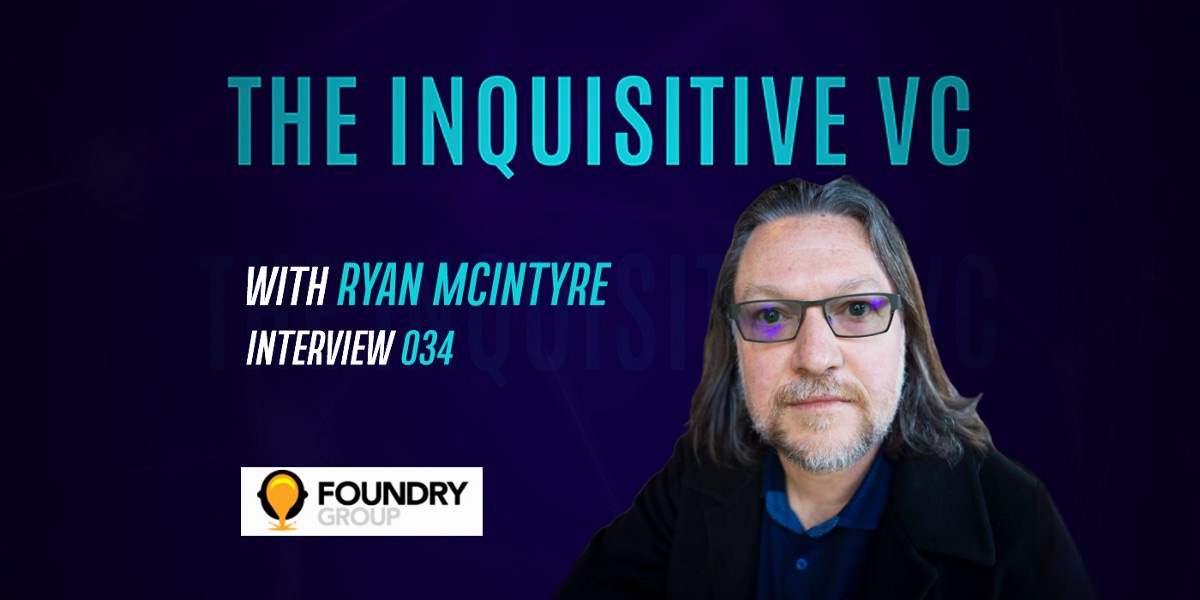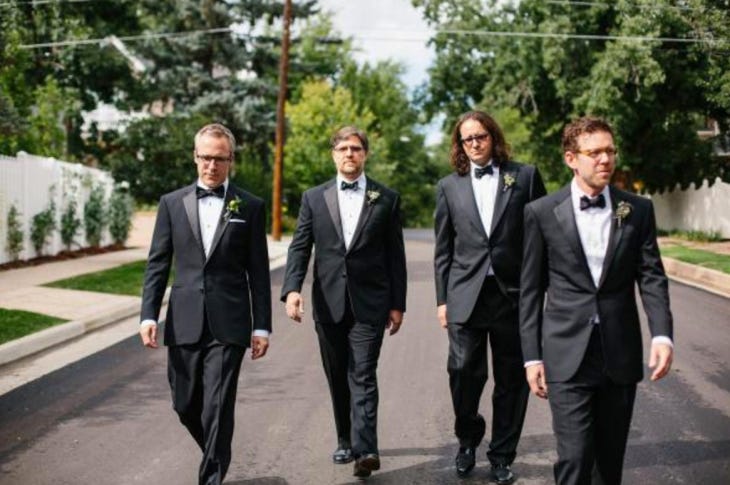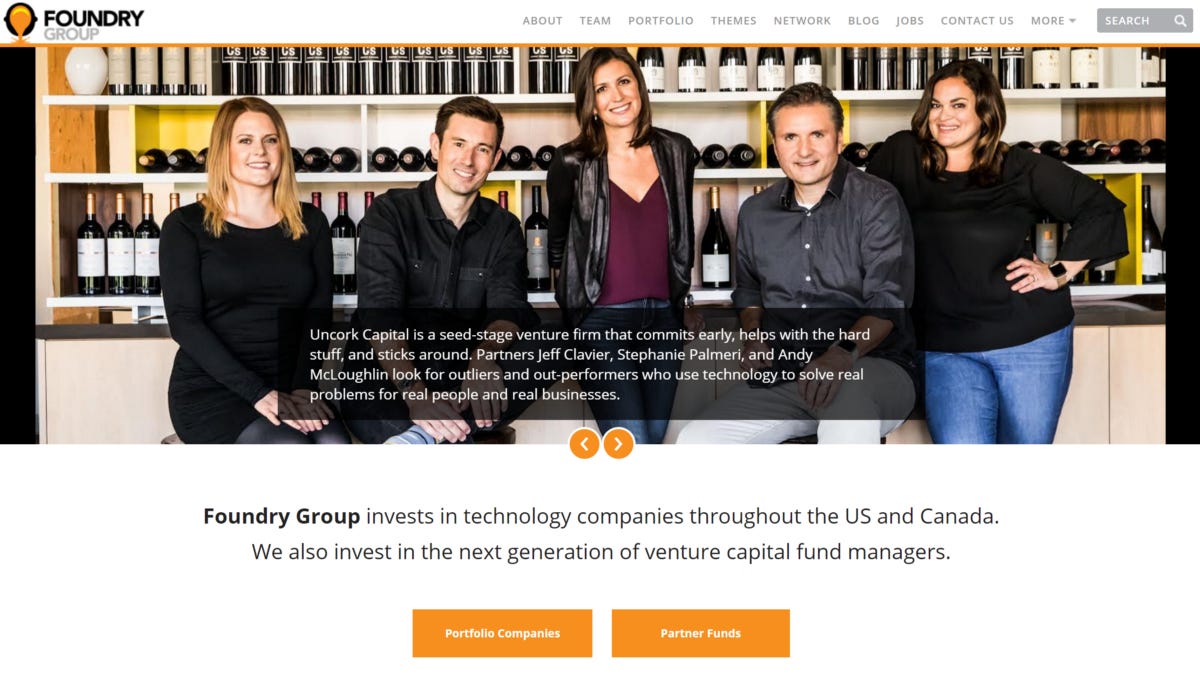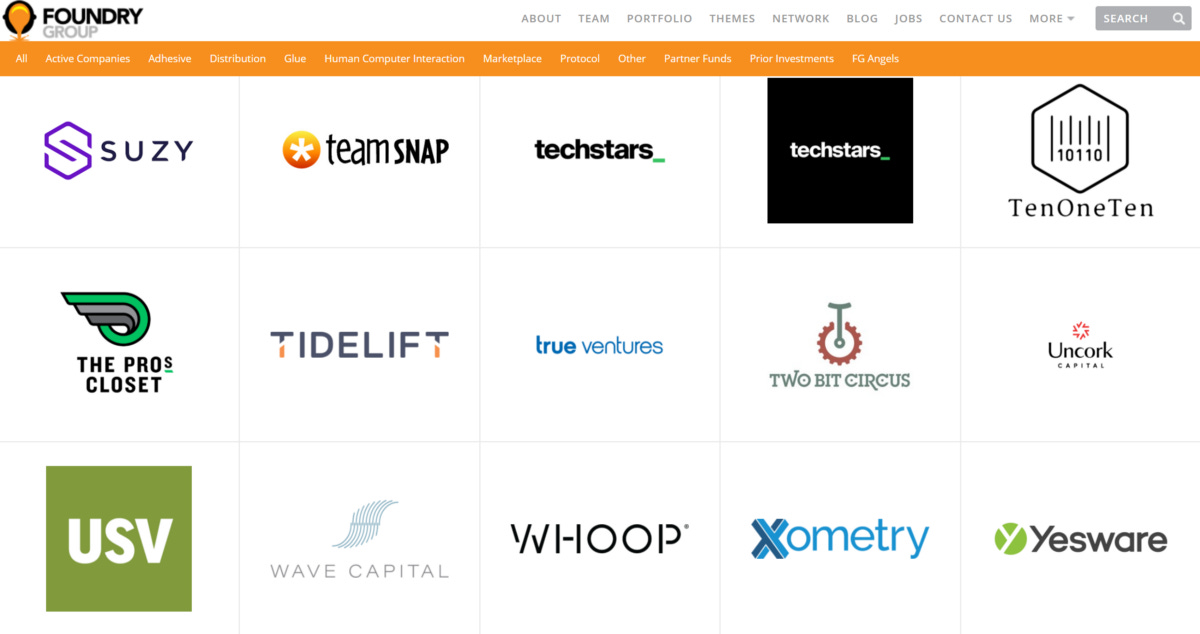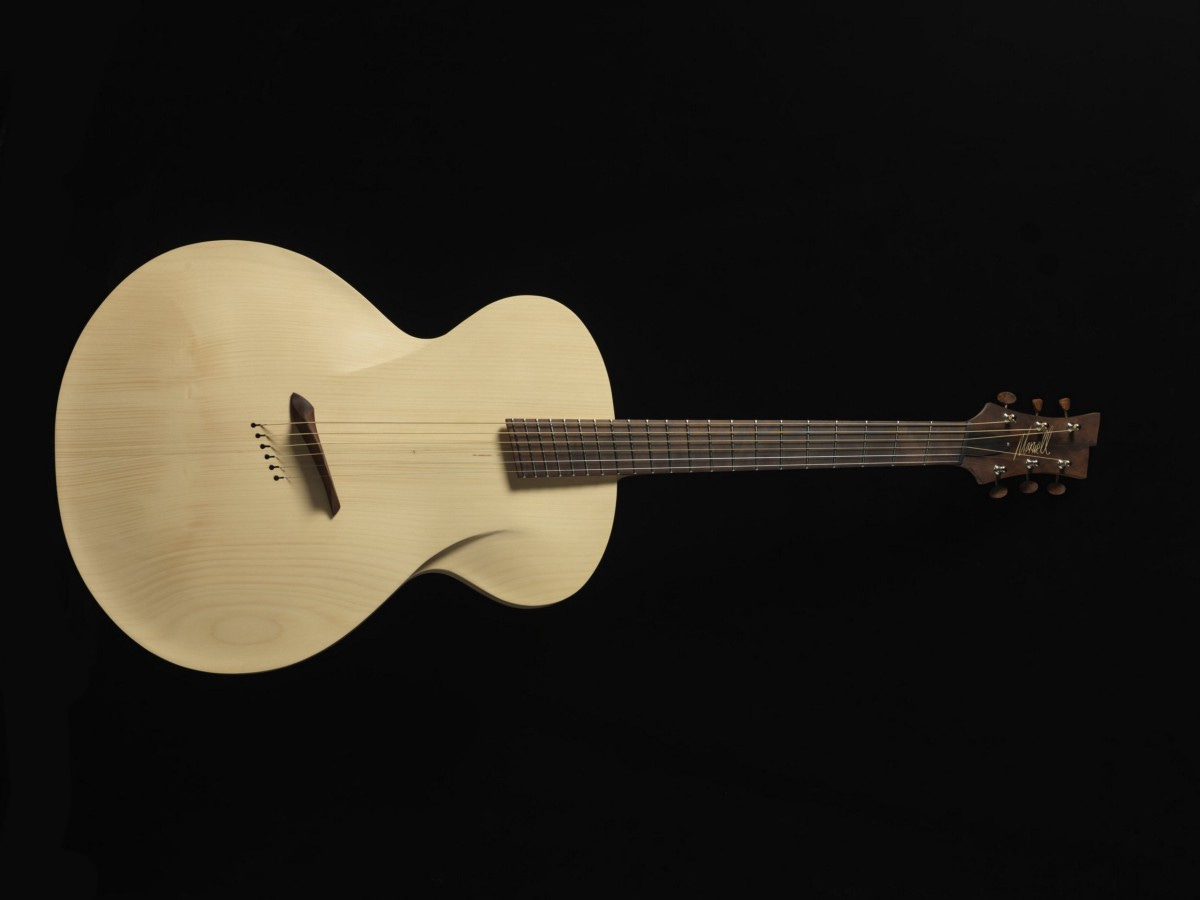Ryan McIntyre — Foundry Group
We talk about his journey to VC, investing in funds, investing in New Zealand, his anti-portfolio and more!
Ryan McIntyre is a founding partner of Foundry Group focusing on investments across the Foundry portfolio. Prior to co-founding Foundry Group, Ryan started his career in venture capital at Mobius Venture Capital and co-founded Excite. Ryan is an avid guitarist, songwriter, recording engineer, and runs the occasional marathon.
We talk about his journey to VC, investing in funds, investing in New Zealand, his anti-portfolio and more!
NA: Thanks for joining me, Ryan. It would be great to start with how you entered the world of venture?
RM: I was an entrepreneur and software engineer and prior to becoming a venture capitalist, I started a company called Excite, which was one of the first-generation early internet 1.0 search engines, pre-Google era. I started the company in 1994, with several of my classmates. I went to Stanford University as an undergrad. To put this in context, we had started working on this idea around 1993 and so there was no web at the time really.
When we decided to build a search engine, it was based on seeing some interesting lectures from Xerox Palo Alto Research Centre. It is a famous lab in Palo Alto, just outside of the Stanford campus, where some of the researchers there had been doing some cool work on building search engines that lets you make more flexible natural language searches.
We were interested in building a search engine just based on the simple observation that it felt like structured data and relational databases were one part of the market where there seemed to be a lot of players.
We realized there’s a lot more unstructured, digitized data that’s coming online and we figured we’d be an enterprise software company searching intranet. It wasn’t even called an intranet back then, it was file servers, so we started building that.
We had all just graduated. I was working at Oracle myself at the time, and ultimately, we decided we needed to go full time to build this thing. We had to figure out how to fund it, I think we all borrowed a few thousand dollars from friends and family, but that wasn’t enough, especially back then to fund a company.
It was then that we learned about the existence of venture capital. I had never heard of it before. We were introduced to some folks and ultimately raised money from Jeff Yang, from IVP, he’s at Redpoint now, and Vinod Khosla, who was at Kleiner Perkins at the time, and is now Khosla Ventures.
Excite, grew and we launched a web search engine, not just an enterprise software search engine in October of 1995. Our site grew massively. We were one of the top five sites on the internet for many years. We went public on the NASDAQ in 1996, and merged with @Home in 1998.
I left the combined company at the end of 1999 and in January of 2000, I got into the venture capital business. I had joined a firm called Mobius Venture Capital, which was based in the Bay Area, in Silicon Valley. Originally, I was invited to come and basically hang out at the Mobius Venture Capitals offices, while I figured out what I was going to do next.
I had assumed I would go start another company or maybe an interesting company would come through that we’d be evaluating, and I’d decide I’ll join that one. I also started getting really interested in the process of evaluating companies for investment as they came through.
After I had been hanging out for a few months they said why don’t you stick around? I became a venture partner in early 2000. Mobius was a large fund at the time, there was a $1.25 billion dollar fund, which in 2000 was big.
While I was there, that’s where I learned to do venture capital, and the next thing I knew, I had been doing venture capital for several years and by the end of 2005, Mobius’ investment period had ended, and it was clear that it wasn’t going to continue on.
I was one of the handful of people there who was most excited by and really focused on doing early-stage investing. Serious investing in software companies, internet companies, etc. My colleagues at the time within the organization who were doing similar things, was my partners, Brad Feld, Seth Levine, and Jason Mendelson.
The four of us decided in 2006 that we wanted to keep doing that style of investing. We decided to leave and create our own fund, which was Foundry Group. I moved to Boulder, Colorado, to start Foundry Group. Mobius had had an office in Boulder already because of my partners, Brad and Seth who were based out there.
We decided since it was just going to be a small boutique fund of four partners. We didn’t want to have two offices, so we chose Boulder because Brad and Seth were already there, we had a thesis that the days of Silicon Valley being the only place where you could do startup investing were coming to an end. Of course, Silicon Valley continues to be and will always be one of the primary high-tech markets, but we also thought that there was great opportunity to invest in North America, not just Silicon Valley, but also outside of Silicon Valley.
Brad and I spent a good part of 2006 and early 2007 on the road raising money from institutional investors. We closed our first fund I think it was September of 2007 and our first Foundry Group fund was $225 million USD. We had a goal of investing in between 25 and 30, companies, over the course of that portfolio. Mostly in Seed and Series A type investments, true to our vision.
When we started the firm we thought that we would do maybe a third of our investments in California, particularly the Bay area, a third in Colorado, in the Rocky Mountain West region, and then a third in other, entrepreneurial tech markets in the United States, places like Portland, Seattle, Boston, New York, Austin, Texas. Ever since we started Foundry Group, largely our prediction about what geographies we’d wind up investing in North America has more or less been true.
NA: That is a great summary of your journey to Foundry. I’ve seen that Foundry Group has invested in funds as well. I’m interested to understand why you chose to go down that route alongside direct investing?
RM: To answer that I’ll just give you a little bit more of Foundry’s history. The fund investing that we do is a relatively recent addition to our strategy. By recent, I mean since 2016.
We had been making personal investments in other venture funds for many years before that, which was one of the things that led us to do it at Foundry Group as well. Being individual LPs in many different venture funds, not only was a good financial investment for us when we did that but also a great way to both get closer to a venture firm and see and have data and understanding of what was interesting in their portfolios.
Our funds were investing early stage, and our initial checks would be anywhere from say three to seven million dollars. Later on, we also raised some growth funds for slightly later stage investing, targeted at companies form our earlier portfolios.
As we were starting up Foundry, my partner, Brad had co-founded Techstars. We had a front seat and deep involvement in the launch of Techstars and building an accelerator like that. We sourced many of our interesting companies from there, like SendGrid.
Most of the companies that went through Techstars were earlier stage than we would normally invest anyway, but because of our involvement and investment in Techstars, we were in this great position where we have visibility into companies that were interesting and scaling that were coming through Techstars.
When ones overlapped with our investment areas of investment focus, we would take a close look and I think over time, maybe 20 to 25% of the companies we invested in directly at Foundry had originated in Techstars.
To put it in perspective Techstars has created on the order of 2000 companies over the years, and we’ve made direct investments in maybe 130–140 companies. It became a valuable source of early-stage deal flow for Foundry Group.
Leading up to 2016 when we raised another early-stage fund again, $225 million dollars, to continue doing our Series A investing efforts. In 2016, we were also getting ready to raise another growth fund and we had started thinking about a couple of things:
One, which was the personal investing we had done in other venture funds, was turning out to be really valuable to us and when you put them together in aggregate all those individual investments we’ve made in other venture funds, it gave us a pretty broad view of the early-stage landscape, across a bunch of different portfolios, and hundreds of different companies.
We started to think about how this gives us access to a broader network of early-stage, investment universe and gosh, we could focus entirely between Techstars and these other venture funds portfolios to find investments for Foundry to do directly.
At the same time, we had been having conversations with a guy who’s now one of our partners, his name’s Lindel Eakman. He was at UTIMCO, which is the University of Texas endowment, and had a very good track record of investing in the next generation of venture funds.
He was an institutional LP; he was our largest LP. It was about 20% of the commitments in any of our given funds and he had invested in the first funds for Union Square Ventures and True Ventures, Softech/Uncork, Spark Capital, and Foundry Group. He had done at a large and institutional scale, a really good job of seeding this next generation of venture capital firms.
We thought, “Hey, we’re doing that with our personal money anyway, wouldn’t it be cool if we could upscale that activity and make more meaningful, bigger commitments to these funds.”
We thought one of the best ways to propagate the Foundry Group DNA and our way of doing early-stage investing was actually to help, mentor and get behind the next generation of venture funds and we could do that if we added a fund to fund investing strategy to Foundry Group.
In 2016, after we raised our early-stage fund, we said, we want to raise some more money to do more of the growth investing that we’re doing, but we also want to add a fund investing strategy to that.
So that was Foundry Group Next, it was a $500 million fund. About 25 to 30% of it goes to investing in venture funds and the rest to making direct growth investments. That’s how we got into doing fund of fund investing.
NA: That’s really interesting. You have personally made some investments as an LP in Movac and Hillfarrance, two local New Zealand funds. It’s great to have you part of the ecosystem, but what is it about New Zealand that attracted you to invest here?
RM: Yes, I have but I want to be very clear that that’s just my personal money, not Foundry Groups.
One of the things that are just very attractive to me from my initial observations of being in New Zealand is that New Zealand has, to me, all of and then some of the necessary ingredients for a great entrepreneurial ecosystem.
You’ve got a highly educated workforce, you’ve got a government and a tax system that’s entrepreneurship friendly, you have some vibrant creative ecosystems and course you also have enough generations of entrepreneurship here in New Zealand already with successful companies that have gone through the exit cycle. They have generated returns for investors and angels and those entrepreneurs are turning around and putting the money back into the ecosystem to get the flywheel going.
Those are all just super important of building a great venture ecosystem. Obviously, already there’ve been numerous high-profile companies to come out of New Zealand. Everyone talks about Xero, but you’ve got Trademe, you’ve got Rocket Lab, it’s awesome to see some of their progress as well, and just more and more coming.
I think it’s an exciting time, given New Zealand’s international profiles never been better or you’ve got ex-pats coming back to the country, which I think will further enrich the talent pool and obviously COVID teaching us all that people can work from anywhere.
It's an exciting time for New Zealand, who’s ecosystem is already on a great trajectory, I think is going to only be accelerated by the recent craziness in the world.
NA: Agreed, I’m excited to see how we progress. I’d love to hear some of the highlights of your anti-portfolio, and what you might have learned from them.
RM: That’s a good question, we don’t publish our anti portfolio. One that’s top of mind that we’ve kicked ourselves about recently and are happily investors in through True Ventures, as LPs, but we passed on Peloton in its early stages.
The interesting thing about that is that we were co-investors with True Ventures in Fitbit. So, it’s not like we didn’t believe in consumer hardware or things like that, but I think at the time it was one of their early rounds and Peloton was one of many doing something like it.
Our thought process at the time was, that it probably makes more sense as a subscription content play that you consume on a tablet, and Peloton was doubly weird because it was saying, no we’re going to sell a multi-thousand dollar bike, super heavy and hard to ship and tie it to that bike. Its hindsight is 20/20 thing, but that’s the one that is most recently on our mind because I think we said no to it more than once.
Coinbase is another, our friends at Union Square Ventures are investors in that. We looked at that and passed on it when they were in the process of getting banking licenses in all 50 states. We were reluctant because that seemed hard and it was going to consume a lot of cash just to go through regulatory and bureaucratic paperwork. Sometime after that is when crypto took off.
NA: Those are some great ones for the anti-portfolio. I’d love to know what’s a secret obsession of yours that not many people know about?
RM: I don’t know how secret my obsessions are because I tend to post them broadly. I’m a lifelong musician, I’ve played in bands my whole life. I have a recording studio in my basement.
Music’s always been a thing for me, guitar in particular. I’ve acquired, a somewhat large guitar collection over the years. That’s fun, and in fact, I just took delivery of a guitar made by a guy named Glenn Maxwell, who’s a luthier here in New Zealand.
It’s a beautiful archtop guitar. It’s a really striking, interesting design made out of all native New Zealand woods and it’s gorgeous.
NA: I love how it’s quite different from your day job as a VC. Finally, what is the latest publicly announced investment you made and why did you make it?
RM: The latest investment we made, is a Boulder, Colorado company called ColdQuanta. It’s a quantum computing and quantum measurement and sensing company. I think it’s about 13 years old and it was founded by a professor out of CU, Dana Anderson.
They’re basically experts in cooling in quantum matter, which is taking atom and cooling them to nano Kelvin’s above absolute zero and create Bose-Einstein condensates. They built this fundamental technology that’s all-around capturing atoms in matrices and lattices of lasers, and taking it down to absolute zero.
It has applications, not just in quantum computing, which obviously is a super interesting field right now. ColdQuanta’s taking a fundamentally different approach, to what is usually seen. You don’t need any cooling equipment because the cooling is done with these lasers that enable you to make the cubits out of the atoms themselves.
It has all sorts of applications in addition to quantum computing, enabling fine measurement of time, of mass, being able to do quantum signal processing of radar and things like that.
They just announced this round. It was a large round, and we were happy to be part of it because we’ve been in Boulder for years and I had gotten to know Dana over the last number of years. It’s a great fundamental and potentially massive impact the technology to be supporting and we like it because it’s a platform level technology.
NA: That's an exciting company. Thanks for taking the time to chat Ryan!
RM: Thanks for having me!




